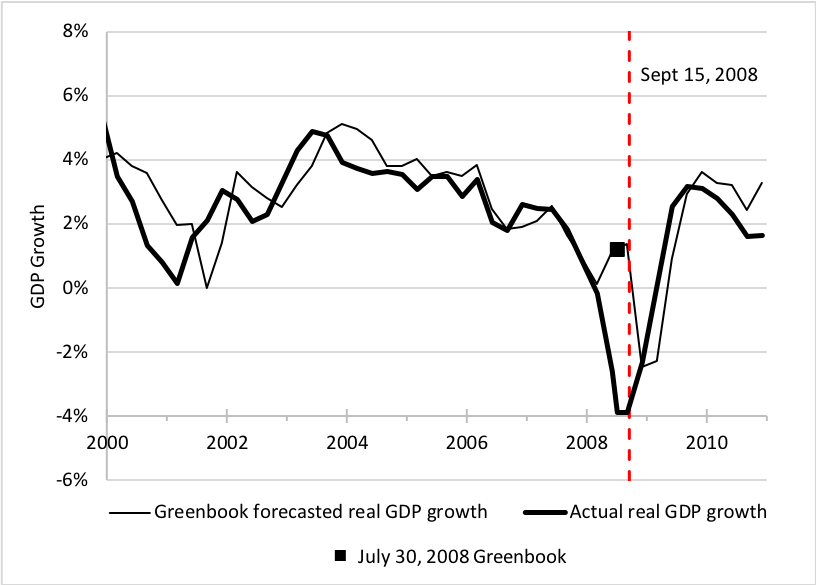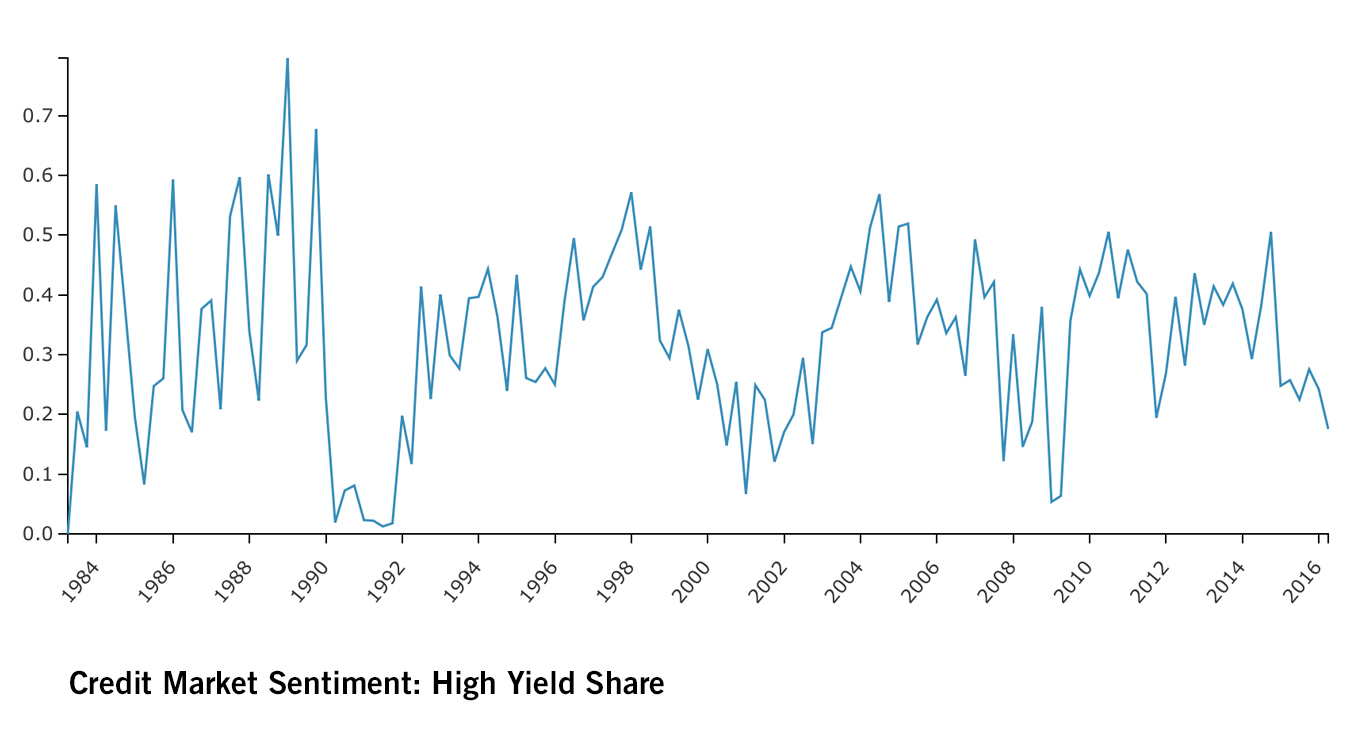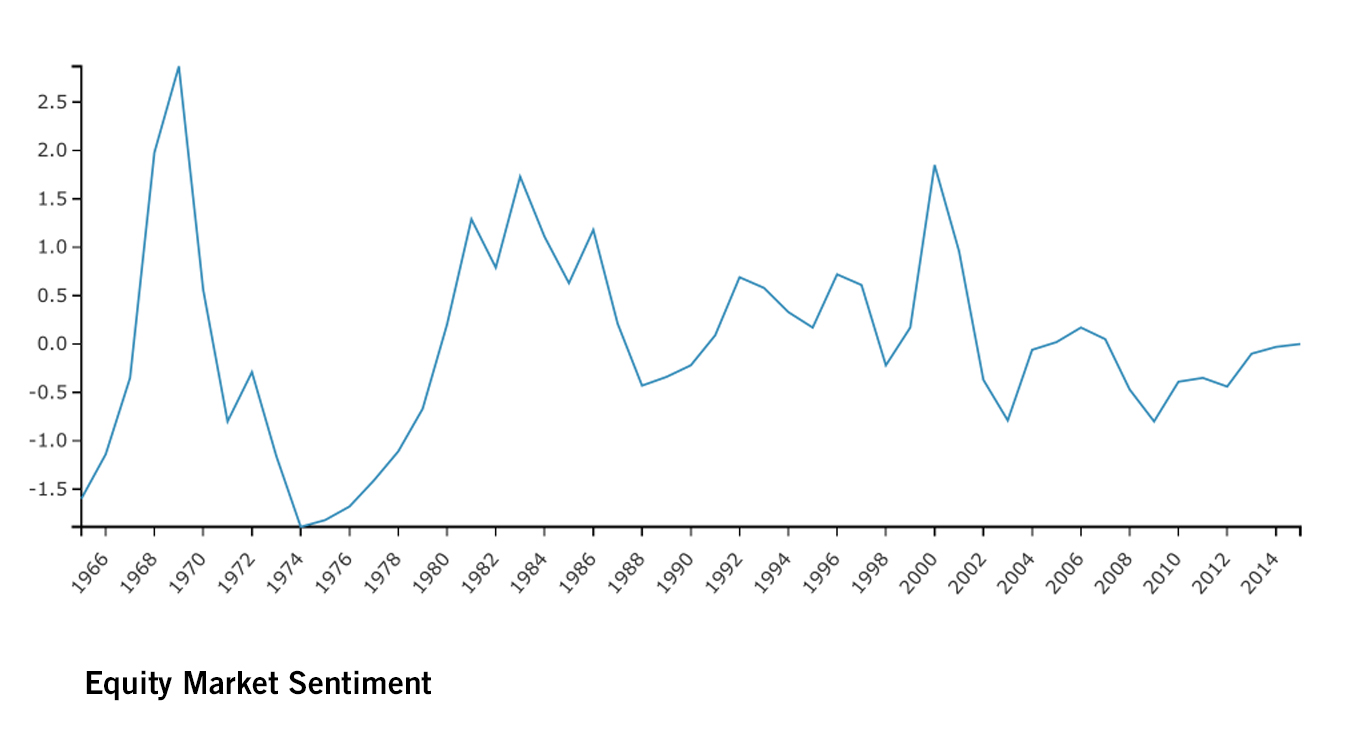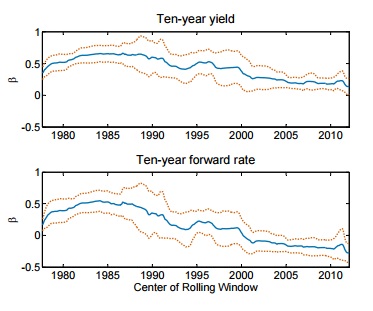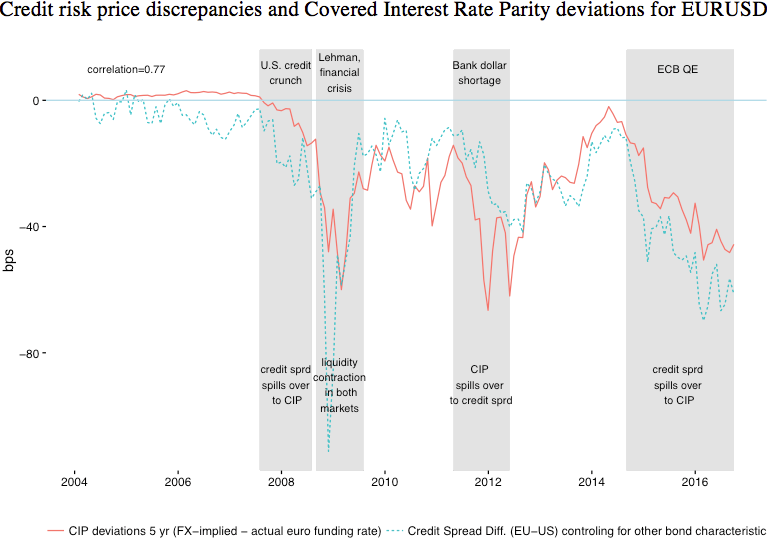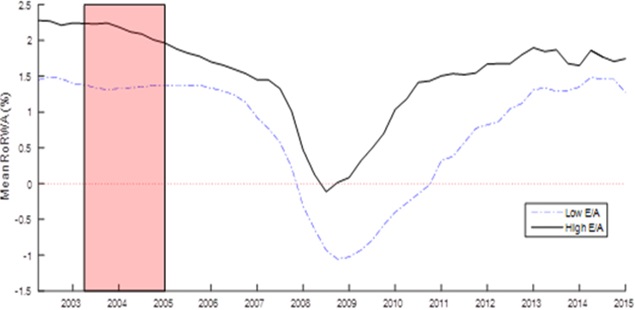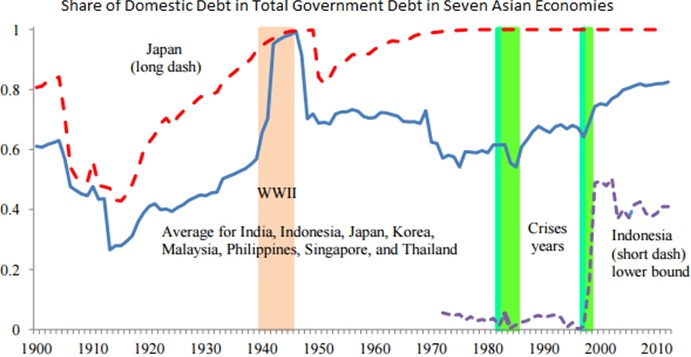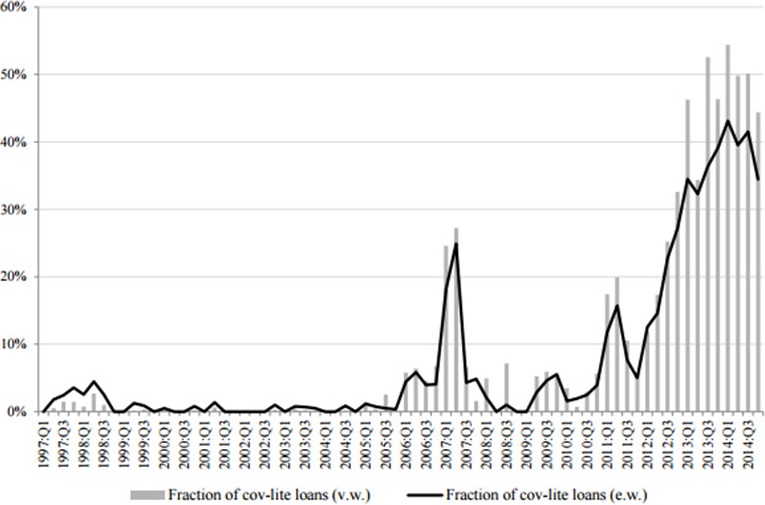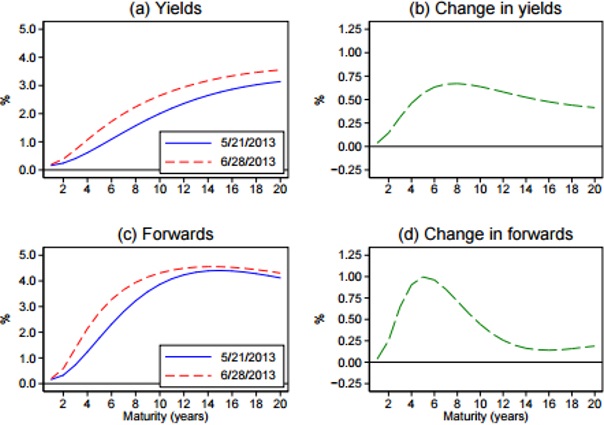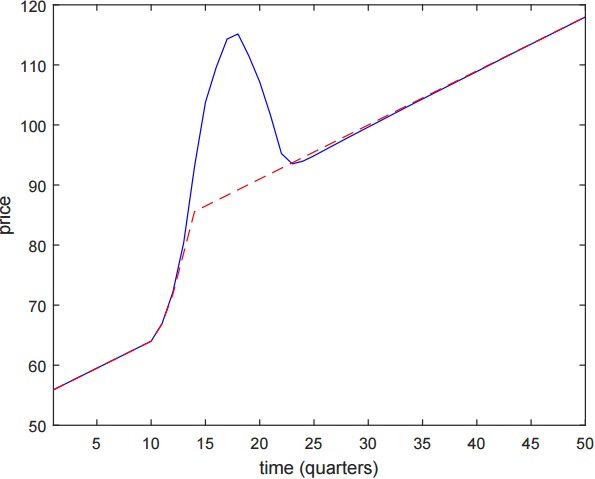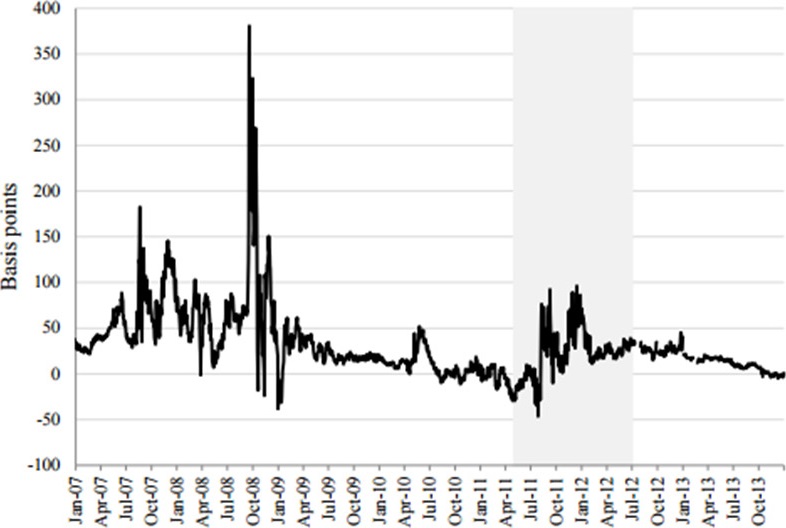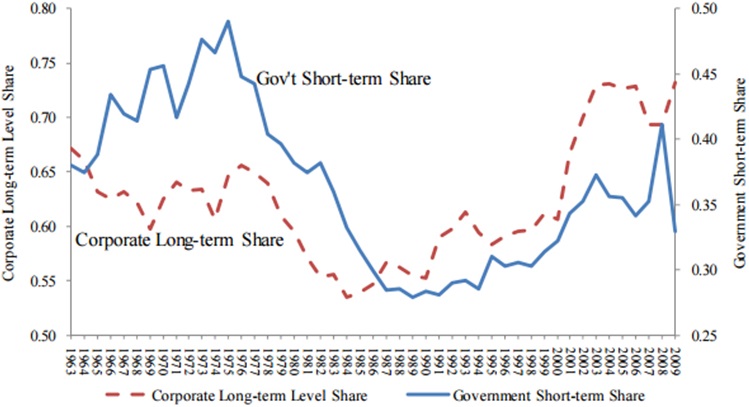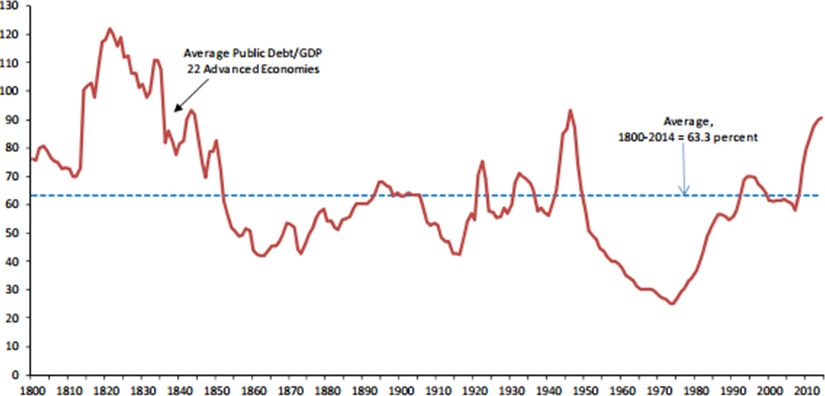The Behavioral and Financial Stability Project, founded at Harvard Business School, supports research collaborations between faculty and students across Harvard University to understand, predict and prevent financial instability.
The BFFS project also maintains an ongoing real-time database of financial stability and investor sentiment measures that it makes available to researchers and the broader public. Please visit our About page for more information about the project.
Invisible Primes: Fintech Lending with Alternative Data
- MAR 2022
Will the use of alternative data to assess borrowers’ creditworthiness result in broader credit access? Using administrative data provided by a major fintech platform, the authors find that, compared to actual outcomes of the fintech platform’s model, the counterfactual outcomes based on a “traditional model” used for regulatory reporting purposes would result in a 60% higher probability of being rejected and higher interest rates for those approved. They show that funding loans to these borrowers lead to better economic outcomes for the borrowers and higher returns for the fintech platform. See Marco’s other research here, Dimuthu’s other research here, and Don’s other research here.
Stock Market Stimulus
- MAR 2022
What is the role of fiscal stimulus in the stock market? The authors study the stock market effects of the arrival of the three rounds of “stimulus checks” to U.S. taxpayers and the single round of direct payments to Hong Kong citizens. The first two rounds of U.S. checks appear to have increased retail buying and share prices of retail-dominated portfolios. The Hong Kong payments increased overall market turnover and share prices in Hong Kong and mainland Chinese markets, especially in large-cap portfolios. See Robin’s other research here, Toomas’s other research here, and Jeffrey’s other research here.
Loan types and the bank lending channel
- MAR 2022
There are four main types of commercial credit: asset-based loans, cash flow loans, trade finance and leasing. The authors show that credit growth dynamics and bank lending channels vary across these loan types using credit-registry data for Spain and Peru. The effects of monetary policy propagating through banks’ balance sheets are primarily driven by cash flow loans, whereas asset-based credit is mostly insensitive to these types of effects. See Victoria’s other research here, Luc’s other research here, and Enrique’s other research here.
Predictable Financial Crises
- JAN 2022
Using historical data on postwar financial crises around the world, the authors show that the combination of rapid credit and asset price growth over the prior three years is associated with a 40% probability of entering a financial crisis within the next three years. The evidence challenges the view that financial crises are unpredictable and supports the view that crises are the by-product of predictable, boom-bust credit cycles. This predictability favors policies that lean against incipient credit-market booms. See Robin’s other research here, Sam’s other research here, Andrei’s other research here, and Jakob’s other research here.
Segmented Arbitrage
- NOV 2021
Financial intermediaries play a key role in determining asset prices. The authors use arbitrage activity in equity, fixed income, and foreign exchange markets to characterize the frictions and constraints facing intermediaries. They show that at least two types of segmentation drive arbitrage dynamics: funding and balance sheets. Their results suggest specialization on both the asset and liability sides of intermediary balance sheets is important for understanding their role in capital markets. See Emil’s other research here, Adi’s other research here, and Jonathan’s other research here.
Business Credit Programs in the Pandemic Era
- OCT 2021
The authors develop models that speak to the goals and design of the government-introduced business lending and corporate bond purchase programs in response to the COVID-19 pandemic. In contrast to the classic lender-of-last-resort thinking, the authors argue that an effective policy response to the pandemic will require the government to accept the prospect of significant losses on credit extended to private sector firms. See Sam’s other research here, Jeremy’s other research here, Adi’s other research here, and Eric’s other research here.
Large banks and small firm lending
By: Victoria Ivashina & Vitaly Bord
- OCT 2021
The contraction in bank credit supply was a core propagation mechanism of the Great Financial Crisis (GFC) of 2007–2009. What are the long-lasting effects of the GFC on small business credit supply? The authors find that banks affected by the decline in real estate prices systematically contracted their credit to small firms. However, unaffected regional and local banks increased small business lending to nearby borrowers and opportunistically expanded their branch networks, dampening the negative effect on small firms during the GFC and its aftermath. See Vitaly’s other research here and Victoria’s other research here.
Bank balance sheet constraints and bond liquidity
- SEP 2021
The authors explore the ties between bonds and individual dealers formed through home advantage and the persistence of previous underwriting relationships. Building on these connections, the introduction of the leverage ratio for the European banks had a large impact on exposed bonds’ liquidity. Moreover, based on these ties, bond mutual fund panic following the 2020 pandemic outbreak affected substantially more mutual funds with the larger exposures to dealer banks’ balance sheet constraints. See Johannes’ other research here and Victoria’s other research here.
Diagnostic Bubbles
- SEP 2021
The financial crisis of 2007–2008 has revived academic interest in price bubbles. The authors introduce diagnostic expectations into a standard setting of price formation in which investors learn about the fundamental value of an asset and trade it. They study the interaction of diagnostic expectations with learning from prices and speculation (buying for resale). See Pedro’s other research here, Nicola’s other research here, Spencer’s other research here, and Andrei’s other research here.
The Cross-Section of Bank Value
- AUG 2021
What are the determinants of value creation in U.S. commercial banks? The authors develop novel measures of banks’ productivities at collecting deposits and making loans. They find that deposit productivity is responsible for two thirds of the value of the median bank and most variation in value across banks. Variation in productivity is driven by differences across banks in technology, customer demographics, and market power. Their findings suggest that there is significant heterogeneity in banks’ ability to capture value by manufacturing safe assets. See Mark’s other research here, Stefan’s other research here, and Adi’s other research here.
Rate-amplifying demand and the excess sensitivity of long-term rates
- APR 2021
The sensitivity of long-term interest rates to movements in short-term rates is a central feature of the term structure. It plays a crucial role in the transmission of monetary policy. Long-term nominal interest rates are surprisingly sensitive to high-frequency movements in short-term rates. By contrast, the association between low-frequency changes in long- and short-term rates has weakened substantially. The authors develop a model to explain the frequency-dependent excess sensitivity of long-term rates that they have observed in recent years. See Sam’s other research here, David’s other research here, and Jonathan’s other research here.
Can Policy Tame the Credit Cycle?
By: Jeremy C. Stein
- JAN 2021
Jeremy provides a brief survey of recent research about credit cycles. He interprets these facts through a conceptual lens, asking what theoretical mechanisms appear to be most consistent with the data. And he poses the question of what policymakers can do—with either regulatory tools or monetary policy—to help moderate credit-driven fluctuations in real activity. See Jeremy’s other research here.
Real Credit Cycles
- JAN 2021
This research assesses the ability of non-rational expectations to account for boom-bust macroeconomic cycles. The authors incorporate diagnostic expectations into a workhorse neoclassical business cycle model with heterogeneous firms and risky debt. To generate the size of spread increases observed during 2008-9, the model requires only disappointment of overoptimistic beliefs rather than large negative shocks. Diagnostic expectations offer a realistic, parsimonious way to produce financial reversals in business cycle models. See Pedro’s other research here, Nicola’s other research here, Andrei’s other research here, and Stephen’s other research here.
Sizing up Corporate Restructuring in the COVID Crisis
- NOV 2020
In the wake of the COVID-19 pandemic, the financial and legal system will need to deal with a surge of financial distress in the business sector. In this paper, the authors try to size up the coming surge of financial distress, list the challenges it presents in the current environment, and analyze potential policy solutions. Overall, their analysis suggests that the two key issues will be court congestion and excess liquidation and failure of small firms. See Robin’s other research here, Benjamin’s other research here, and David’s other research here.
Overreaction in Macroeconomic Expectations
- SEP 2020
What does predictability of forecast errors teach us about how market participants form expectations? The authors study the rationality of individual and consensus forecasts of macroeconomic and financial variables. They use a diagnostic expectations version of a dispersed information learning model to explain why individual forecasters typically overreact to news, while consensus forecasts underreact relative to full-information rational expectations. See Pedro’s other research here, Nicola’s other research here, Yueran’s other research here, and Andrei’s other research here.
Leverage and the Beta Anomaly
- AUG 2020
Baker, Hoeyer, and Wurgler propose a simple tradeoff theory to explain the well-known weak empirical relationship between beta risk and the cost of equity (the beta anomaly): As firms lever up, the overall cost of capital falls as leverage increases equity beta, but as debt becomes riskier the marginal benefit of increasing equity beta declines. They find that leverage is inversely related to asset beta, including upside asset beta. See Malcolm’s other research here and Jeffrey’s other research here.
The Pass-through of Uncertainty Shocks to Households
- AUG 2020
What is the impact of uncertainty on individual outcomes? Based on new employer-employee matched data, the authors find that firms provide at best partial insurance to their workers. An increase in firm-level uncertainty is associated with a decline in total compensation, especially in variable pay. They also construct a new county-level uncertainty shock and find that local uncertainty shocks reduce county-level durable consumption. See Marco’s other research here, Amir’s other research here, Rodney’s other research here, Vincent’s other research here, and Edison’s other research here.
Stock Market Returns and Consumption
- JULY 2020
What is the causal impact of changes in stock market wealth on households’ consumption? Using Swedish data on households’ stock holdings, the authors find that unrealized capital gains lead to a marginal propensity to consume of 23% for the bottom 50% of the wealth distribution and about 3% for the top 30% of the wealth distribution. Household consumption is significantly more responsive to dividend payouts. See Marco’s other research here, Amir’s other research here, and Kaven’s other research here.
Monetary Policy and Global Banking
- JULY 2020
When central banks adjust interest rates and equity capital is limited, global banks must benchmark domestic and foreign lending opportunities. The authors show that, in equilibrium, the marginal return on foreign lending is affected by the interest rate differential, with lower domestic rates leading to an increase in local lending at the expense of a reduction in foreign lending. See Falk’s other research here and Victoria’s other research here.
A Quantity-Driven Theory of Term Premia and Exchange Rates
- JULY 2020
The authors provide a framework for understanding how the detailed structure of financial intermediation impacts foreign exchange rates. They develop a model in which specialized bond investors must absorb shocks to the supply and demand for long-term bonds in two currencies. Their model matches several important empirical patterns, including the co-movement between exchange rates and term premia, as well as the finding that central banks’ quantitative easing policies impact exchange rates. See Robin’s other research here, Sam’s other research here, Jeremy’s other research here, and Adi’s other research here.
U.S. monetary policy and emerging market credit cycles
- JUNE 2020
For emerging market economies (EMEs), foreign bank loans are the most important category of cross-border capital flows, and they are denominated primarily in U.S. dollars. This creates a direct connection between U.S. monetary policy and EME credit cycles. The authors estimate that over a typical U.S. monetary easing cycle, EME borrowers experience a 32-percentage-point greater increase in the volume of loans issued by foreign banks than do borrowers from developed markets, followed by a fast credit contraction of a similar magnitude upon reversal of the cycle. See Falk’s other research here and Victoria’s other research here.
Weak Credit Covenants
- JUNE 2020
Using novel data on 1,240 credit agreements, Victoria and Boris investigate sources of contractual complexity in the leveraged loan market. While negative covenants are widespread, carve-out and deductible clauses that weaken them are as frequent. They propose simple measures of contractual weakness, which uniquely explain the market-wide price reaction that followed the 2017 J.Crew restructuring, a high-profile use of such contractual elements. See Victoria’s other research here and Boris’ other research here.
Financial Market Risk Perceptions and the Macroeconomy
- MAR 2020
This research provides evidence that financial market risk perceptions are important drivers of economic fluctuations. The authors introduce a novel measure of risk perceptions: the price of volatile stocks. They show that high perceived risk is associated with low risk-free interest rates, a high cost of capital for risky firms, and future declines in output and real investment. These declines are predictably followed by upward revisions in perceived risk, indicating that fluctuations in investor risk perceptions are not fully rational. See Carolin’s other research here, Emil’s other research here, and Adi’s other research here.
How Quantitative Easing Works: Evidence on the Refinancing Channel
- DEC 2019
Owing to the popularity of large-scale asset purchase programs (QE) worldwide, their effectiveness and the channels through which they affect the real economy have been at the center of a policy and academic debate. The authors find that central bank QE1 MBS purchases substantially increased refinancing activity, reduced interest payments for refinancing households, led to a boom in equity extraction, and increased aggregate consumption. Also, the transmission of QE to the real economy depends crucially on the composition of assets purchased and the degree of segmentation in the market. See Marco’s other research here, Amir’s other research here, and Christopher’s other research here.
The Relevance of Broker Networks for Information Diffusion in the Stock Market
- NOV 2019
How does the network of relationships between brokers and investors influence information diffusion in the stock market and, thus, the market outcomes? The authors find that central brokers gather information by executing informed trades, which are then leaked to their best clients. See Marco’s other research here, Francesco’s other research here, and Amir’s other research here.
Do Banks have an Edge?
By: Juliane Begenau & Erik Stafford
- NOV 2019
By decomposing bank activities into passive and active components and evaluate the performance of the active components of the bank business model, Juliane and Erik shed light on the bank’s performance over the period 1960-2016. They argue that the very strong investment performance of passive maturity transformation strategies over this period may mask the underperformance of the specialized bank activities. See Juliane’s other research here and Erik’s other research here.
Brokers and Order Flow Leakage: Evidence from Fire Sales
- AUG 2019
Do brokers spread order flow information in the stock market? Using trade-level data, the authors focus on large portfolio liquidations that result in temporary price drops and identify the brokers who intermediate these trades. They find that the predation leads to profits of brokers’ clients of about 25 basis points and increases the liquidation costs of the distressed fund by 40%. See Andrea’s other research here, Marco’s other research here, Francesco’s other research here, and Augustin’s other research here.
Reflexivity in Credit Markets
- APR 2019
Reflexivity is the idea that investors’ biased beliefs affect market outcomes, and that market outcomes in turn affect investors’ beliefs. The authors develop a behavioral model of the credit cycle featuring such a two-way feedback loop, which can match many features of credit booms and busts. See Robin’s other research here, Sam’s other research here, and Lawrence’s other research here.
Partial Deregulation and Competition: Effects on Risky Mortgage Origination
- FEB 2019
How does financial deregulation affect the use of complex loans features? How do regulated intermediaries react to the deregulation of other lenders? The authors exploit the preemption of national banks from state laws against predatory lending by the Office of the Comptroller of the Currency (OCC) as a quasi-experiment to study the effect of deregulation and its interaction with competition on the supply of complex mortgages. See Marco’s other research here, Amir’s other research here, and Sanket’s other research here.
Do Fire Sales Create Externalities?
By: Sergey Chernenko & Adi Sunderam
- DEC 2018
How do cash policies affect stock returns? A mutual fund that uses its cash reserves to accommodate outflows will lower the volatility of its underlying holdings by buffering against potential price pressure. As a result, there are meaningful externalities in the mutual fund industry due to cash management. A fund family may coordinate the liquidity management efforts of its funds in order to minimize volatility spillovers from fire sales. See Adi's other research here.
Related Themes:
Stabilization Policy & Regulation,
Size & Growth of the Financial Sector
Asset Price Dynamics in Partially Segmented Markets
- SEP 2018
The authors develop a model in which capital moves quickly within an asset class but slowly between asset classes and use the model to reassess event-study evidence on quantitative easing. While most investors specialize in a single asset class, a handful of generalists gradually reallocate capital across markets. They argue that prices in the directly affected market initially overreact, prices in related markets may underreact. See Robin’s other research here, Sam’s other research here, and Gordon’s other research here.
A Crisis of Beliefs: Investor Psychology and Financial Fragility
- SUMMER 2018
In their new book "Crisis of Beliefs: Investor Psychology and Financial Fragility," Nicola Gennaioli and Andrei Shleifer present a comprehensive new theory of belief formation that explains how beliefs shape financial markets, and the destabilizing role the beliefs of home buyers, investors, and regulators played in the period leading up to and during the recent financial crisis. See Nicola's other research here and Andrei's other research here.
Related Themes:
Measuring Sentiment & Expectations
The Impact of Pensions and Insurance on Global Yield Curves
- JUN 2018
In this NBER working paper, researchers from the Behavioral Finance and Financial Stability Initiative evaluate the demand for long term government bonds from Pension and Insurance companies. Regulatory changes are used to provide collaborating evidence that the curvature of the yield curve is shaped through this demand channel. See Robin’s other research here and Annette's other research here.
Related Themes:
Credit Markets,
Size & Growth of the Financial Sector
Pension Policy and the Financial System
- JAN 2018
How has the growth in public and private pension systems affected the financial markets? In his presidential address to the American Finance Association, David Scharfstein argues that pension policies have persistent and deep effects on the development of capital markets. The choice between public pay-as-you-go and privately funded pensions has wide spread implications across all areas of financial research. David explores such implications on Corporate Financing, Household Finance, Banking, and Financial Stability. See David’s other research work here.
Related Themes:
Credit Markets,
Stabilization Policy & Regulation,
Size & Growth of the Financial Sector
Rethinking Stabilization Policy: Evolution or Revolution?
- DEC 2017
The lessons from the Great Financial Crisis, together with a low interest rate environment, have clear implications for the design of stabilization policies. They suggest that policies may need to become more aggressive with a rebalancing of the roles of monetary, fiscal and financial policies. Think of such rebalancing as evolution. If however, neutral rates become even lower, or financial regulation turns out to be insufficient to prevent crises, more dramatic measures, including larger fiscal deficits, revised monetary policy targets, or sharper restrictions on the financial system, may be needed. Think of this as revolution. Do we need the evolution or revolution of our stabilization policy? Time will tell. See Olivier’s other research here and Larry’s other research here.
Strengthening and Streamlining Bank Capital Regulation
- AUG 2017
In this forthcoming brookings paper, researchers from Harvard Business School and the Behavioral Finance and Financial Stability initiative assess the merits of bank regulation since the financial crisis of 2008-2009. Through the lense of a simple model of optimal bank regulation, the authors enumerate three core principles. They argue 1) single constraint should be used in place of multiple constraints on bank equity ratio to minimize distortions on bank behavior; 2) the regulatory framework should be designed minimally to minimize legal gaming and regulatory arbitrage; and 3) regulators, during financial crisis, should actively compel banks to recapitalize.
Interest Rate Conundrums in the Twenty-First Century
- MAR 2017
The standard expectation hypothesis posits that long term interest rates are expected sum of all the short term interest rates between issuance and maturity. Researchers Hanson, Lucca, and Wright document that the correlation of long term interest rates to innovations in short term rates has, if anything, decreased in the 21st century. The namesake conundrums, defined as six- or twelve-month periods in which short rates and long rates move in opposite directions have become far more frequent. The authors rationalize their findings with a model of limited arbitrage. See Sam's other research here.
Related Themes:
Credit Markets
Bubbles for Fama
By: Robin Greenwood, Andrei Shleifer & Yang You
- FEB 2017
Nobel Laureate Eugene Fama once famously stated that stock markets do not exhibit price bubbles. Evidence supporting this claim boils down to the argument that past run up in stock prices do not seem to predict lower future returns. Authors Greenwood, Shleifer, and You seek to evaluate Fama's claim using stock return data gathered from a variety of US industries, and a gamut of international stock market sectors. They find that while Fama is correct in asserting that sharp price increases do not predict lower returns going forward, these increases do predict substantial heightened probability of a crash. Simple attributes related to the price run up can help predict both the crash probability and future returns. See Robin’s other research here and Andrei’s other research here.
Related Themes:
Measuring Sentiment & Expectations
The Fed, the Bond Market, and Gradualism in Monetary Policy
By: Jeremy C. Stein & Adi Sunderam
- FEB 2017 |
- BFFS WP #010
Fed watching has become a routine business for bond market participants and the financial press. Monetary policy announcements are analyzed word by word for clues to the central bank's future actions. Such scrutiny seems inconsistent to interest rate setting models in which policy makers target specific macro variables. If the Fed is simply responsive to publicly observable variables, then the bond market would only react to the release of these variables and not to the policy announcements. Stein and Sunderam posit that private information and preference for volatility smoothing of long term bond yields by the Fed underly this interaction between the Fed and bond market participants. Policy makers are gradual in setting its short term yields to smooth long term yield volatility. However, market participants anticipate this gradualism. In equilibrium, long term yields stay volatile. The authors derive several normative suggestions for policy makers.
Related Themes:
Credit Markets,
Monetary Policy & Money Markets,
Stabilization Policy & Regulation
The Financial Regulatory Reform Agenda in 2017
- FEB 2017 |
- BFFS WP #009
In this note, researchers from the Behavioral Finance and Financial Stability Initiative
evaluate the regulatory reforms since the financial crisis. The authors highlight
several areas in which the reform agenda has made clear progress. These include heightened
capital and liquidity requirements, more stress testing and capital planning at banks,
and increased regulatory authority and tools for financial dissolution. Likewise,
the authors also note several areas in which reforms should be rolled back or modified.
Related Themes:
Monetary Policy & Money Markets,
Stabilization Policy & Regulation,
Size & Growth of the Financial Sector
How Quantitative Easing Works: Evidence on the Refinancing Channel
- DEC 2016 |
- BFFS WP #008
This BFFS working paper examines the empirical effects of unconventional monetary policy. Using novel data on mortgage refinancing, the authors argue that the rounds of quantitative easings had variable results depending on the type of asset purchased and the degree of segmentation for that asset market. QE1, which targeted mortgage markets, had significant effects on aggregate demand and consumption. QE2, which targeted treasuries, had more muted effects. See Marco's other research here, Amir's other research here, and Christopher's other research here
Related Themes:
Credit Markets,
Monetary Policy & Money Markets,
Stabilization Policy & Regulation
Rethinking Operational Risk Capital Requirements
By: Peter Sands, Gordon Liao & Yueran Ma
- DEC 2016 |
- BFFS WP #006
In a BFFS working paper, Sands, Ma, and Liao assess the latest Basel Committee proposals for reform on operational risk capital. The authors conclude that neither the existing Basel II framework nor the reforms that are designed to replace it are effective in minimizing negative externalities from operational risk events. The authors make recommendations for an alternative approach.
Related Themes:
Stabilization Policy & Regulation
Credit Migration and Covered Interest Rate Parity
By: Gordon Liao
- DEC 2016 |
- BFFS WP #007
In this paper, Gordon Liao studies the joint determination of two economically large and persistent violations of the Law Of One Price (LOOP) in the global corporate credit market and the foreign exchange rate market. Post-crisis regulatory and intermediary frictions have severely impaired arbitrage in the exchange rate and credit markets each on their own, but capital flows, such as international debt issuance, bundle together the two LOOP violations. Limits of arbitrage spill over from one market to another. See Gordon's other research here.
Related Themes:
Credit Markets
The Importance of Unemployment Insurance as an Automatic Stabilizer
By: Marco Di Maggio & Amir Kermani
- SEP 2016
How can unemployment insurance serve as an automatic stabilizer to mitigate the economy’s sensitivity to shocks? Using a local labor market design based on heterogeneity in local benefit generosity, Macro and Amir estimate that a one standard deviation increase in generosity attenuates the effect of adverse shocks on employment growth by 7% and on earnings growth by 6%. Their analysis finds that the local fiscal multiplier of unemployment insurance expenditure is approximately 1.9. See Marco’s other research here and Amir’s other research here.
A Model of Credit Market Sentiment
- AUG 2016 |
- BFFS WP #002
Over the past decade, it has increasingly been recognized that investor beliefs play an important role in driving the credit cycle. In "A Model of Credit Market Sentiment", Robin Greenwood, Sam Hanson and Lawrence Jin (of Caltech) develop a model to explore the feedback between credit market sentiment and credit market outcomes. Their model is able to capture many documented features of credit booms and busts, including the link between credit growth and future returns, and the "calm before the storm" periods in which fundamentals have deteriorated but the credit market has not yet turned. See Robin’s other research here, Samuel’s other research here, and Lawrence’s other research here
Related Themes:
Measuring Sentiment & Expectations,
Credit Markets
Monetary Policy and Global Banking
- JUN 2016 |
- BFFS WP #004
Global banks primarily receive funding in their domestic currencies, but operate and invest in multiple foreign currencies. These cross country lending/borrowing operations create demand for currency hedges. A tightening of domestic monetary policy may drive a bank to lend more in a foreign currency by its effect on the these currency hedges. Falk and Victoria show evidence supporting this channel of cross border shock transmission from data sets of country level firm-claims and individual level syndicated loans. See Falk's other research here. See Victoria’s other project-related financial stability research here, or her homepage here.
Related Themes:
Credit Markets,
Monetary Policy & Money Markets
The Private Costs of Highly Levered Banks
By: Juliane Begenau & Erik Stafford
- JUN 2016
The choice of relatively high leverage as a means to reduce the overall cost of capital by many banking practitioners is interpreted as folly by some, and defended by others as a clever decision given the capital market’s apparent failure to appreciate the associated risks. Begenau and Stafford suggest and provide evidence for an additional consideration: that high leverage signals an excessive focus on financing decisions over good management, specifically over value-relevant investment and operating decisions. See Erik’s other research here.
Related Themes:
Global Crisis & Debt Data
More Info
Does Reserve Accumulation Crowd Out Investment
By: Carmen Reinhart, Vincent Reinhart & Takeshi Tashiro
- MAY 2016
In this paper, Reinhart, Reinhart, and Tashiro study nine Asian economies in an effort to understand why much of the decrease in investment that occurred during the 1997-1998 crisis has persisted in the years between 1998 and 2014. Unlike Latin American economies during the mid- to late-1980s, investment in these economies does not appear to be suffering at the expense of private consumption or capital flight. For this reason, the authors contend that the traditional concepts of crowding out and leakages must be redefined to be more encompassing. See Carmen’s other research here and Vincent’s other research here.
Related Themes:
Global Crisis & Debt Data,
Monetary Policy & Money Markets
Secular Stagnation in the Open Economy
- APR 2016
Eggertson, Mehrotra, and Summers develop a two country model to examine how capital markets transmit secular stagnation across countries. In their model, monetary expansion cannot end secular stagnation in an economy and may have "beggar-thy-neighbor" effects, while large fiscal interventions can eliminate secular stagnation and also carry positive externalities. See Gauti's other research here, Mehrotra's other research here, and Lawrence's other research here.
Related Themes:
Monetary Policy & Money Markets,
Stabilization Policy & Regulation
Covenant-Light Contracts and Creditor Coordination
By: Bo Becker & Victoria Ivashina
- 31 MAR 2016
Leveraged loan markets go through episodes in which the typical new loan is issued with far fewer protections to the lender, known as “cov-lite.” Many have pointed to cov-lite issuance as a proxy for credit market overheating. In the first empirical analysis of this topic, Bo and Victoria evaluate whether this development can be attributed to market overheating, increased borrower demand for cov-lite loans, or a rise in creditor coordination costs. See Victoria’s other project-related financial stability research here, or her homepage here. Data related to this study is publicly available here.
Related Themes:
Measuring Sentiment & Expectations,
Credit Markets
Global Cycles: Capital Flows, Commodities, and Sovereign Defaults, 1815-2015
By: Carmen Reinhart, Vincent Reinhart & Christoph Trebesch
- FEB 2016
Empirical works exploring the relationship between capital flows and economic crisises have been limited by data to several episodes in the modern era. Reinhart, Reinhart, and Trebesch explore the rich history of booms and busts in capital flow by uncovering data from sources going back to 1815. The pattern uncovered by the authors have strong implications on the vulnerabilities of many emerging economies today. See Carmen’s other research here, Vincent’s other research here,
and Christoph’s other research work here.
Related Themes:
Measuring Sentiment & Expectations,
Global Crisis & Debt Data
Forward Guidance and the Yield Curve: Short Rates versus Bond Supply
- 07 DEC 2015
The term ‘forward guidance’ – when the central bank guides market expectations – is normally used in reference to central bank policy on short rates. However, quantitative easing (or QE) – the other primary monetary policy tool being used since 2008 – also involves some degree of forward guidance as well. In this paper, Greenwood, Hanson, and Vayanos build a no-arbitrage model of the yield curve that allows for a characterization and comparison of the effects of forward guidance on short rates and forward guidance on quantitative easing. See Robin’s other research here, Samuel’s other research here, and Dimitri’s other research here.
Related Themes:
Monetary Policy & Money Markets,
Stabilization Policy & Regulation
Extrapolation and Bubbles
- SEP 2015
At the heart of standard narratives of historical asset bubbles is a high degree of extrapolation – the formation of expected returns based on past returns – by investors. Yet, nearly all bubbles are also defined by very high trading volume, a feature that excessive extrapolation cannot explain alone. Barberis, Greenwood, Jin, and Shleifer develop a novel model of bubbles, wherein extrapolative investors weigh two opposing signals, in an effort to reconcile these two defining features of bubbles. See Nicholas’s other research here, Robin’s other research here, Lawrence’s other research here, and Andrei’s other research here.
Related Themes:
Measuring Sentiment & Expectations
Dollar Funding and the Lending Behavior of Global Banks
- AUG 2015
Foreign banks play large roles in the US domestic funding market. However, unlike domestic banks, which are funded by insured deposits, these institutions are funded either by uninsured domestic commercial papers or by insured foreign denominated deposits which are then swapped in the FX market. A shock that forces these banks to switch from commercial papers to deposits can have large consequences on the covered interest rate parity relationship given limited arbitrage capital. See Victoria’s other project-related financial stability research here, or her homepage here. See Jeremy’s other research here.
Related Themes:
Credit Markets
A Comparative Advantage Approach to Government Debt Maturity
- AUG 2015
Using a novel model that incorporates monetary benefits that investors derive from holding riskless securities, Greenwood, Hanson, and Stein examine how a government should optimally determine the maturity structure of its debt. They explore the results of their model under multiple scenarios depending on whether a government can directly internalize these monetary benefits and on the presence of private sector competition in the production of riskless, money-like claims. See Robin’s other research here, Samuel’s other research here, and Jeremy’s other research here.
Related Themes:
Credit Markets,
Monetary Policy & Money Markets,
Stabilization Policy & Regulation
Dealing with Debt
By: Carmen Reinhart, Vincent Reinhart & Kenneth Rogoff
- 09 JAN 2015
Following the 2008 financial crisis, many of the world’s economies experienced significant expansion in public sector balance sheets. This occurred as advanced economies faced near record levels of private and external debt as well as severely underfunded pension and health programs – a problem Reinhart, Reinhart, and Rogoff refer to as ‘quadruple debt overhang’. In this paper, the authors lay out a menu of available policy options for normalizing the level of public debt relative to nominal activity in the long run. See Carmen’s other research here, and Kenneth’s other research here.
Related Themes:
Global Crisis & Debt Data,
Stabilization Policy & Regulation
Reforming LIBOR and Other Financial Market Benchmarks
By: Darrell Duffie & Jeremy C. Stein
- JAN 2015
Duffie and Stein review the history and the role of LIBOR and similar benchmarks used in the modern financial market. The authors argue that the incentive to distort these benchmarks is severe given the benchmarks' polling nature and the sheer volume of the derivative market linked to these rates. The authors make several recommendations on how changes to benchmark definition and the adoption of new overall regulatory policies, can reduce the susceptibility of reference rates to manipulation.
Related Themes:
Credit Markets,
Stabilization Policy & Regulation,
Size & Growth of the Financial Sector

